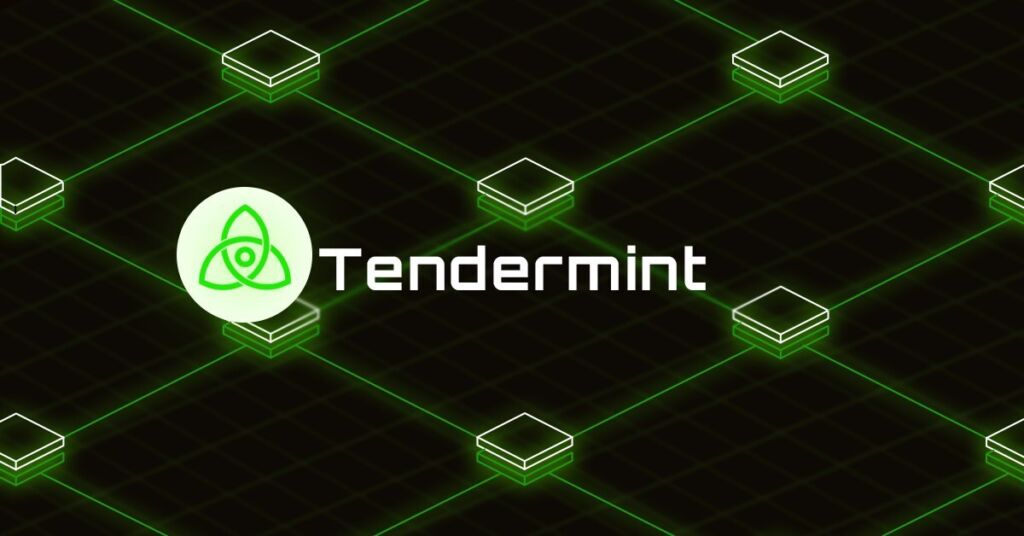
Tendermint consensus algorithm called Byzantine Fault Tolerant (BFT) consensus, which can be implemented on distributed platforms. Hence once a third of the nodes are malicious or have crashed it ensures that all the nodes in a network shall have consensus on the ordering of the transactions.
This consensus mechanism becomes crucial to maintain the consistency and legitimacy of the blockchain networks. To be able to decide in a deterministic manner that once a given block has been committed on the blockchain it cannot be rolled back.
Tendermint utilizes two simplistic steps known as pre-vote and pre-commit. This derived consensus protocol can help large-scale blockchain networks and fast-moving applications that require high throughput and low latency.
Similar to Proof of Staked, it is employed to elect the validators for Tendermint, but, like with PoW — network security depends on the financial reward. The efficiency, fault tolerance, and finality of the Cosmos ecosystem are fundamental to a basic consensus mechanism that allows for the interoperability of decentralized applications.
Table of Contents
Applications of tendermint consensus
1. Blockchain Consensus
Cosmos Network: Tendermint is the basic architecture of the Cosmos which is a network of blockchains. This allows the creation of several non-interacting blockchains (zones) capable of interacting with Cosmos Hub. Each zone has its Tendermint consensus.
Public and Private Blockchains: With regards to open-blockchain systems; decentralized and permissionless and private blockchains, Tendermint ensures that all the nodes are acting based on a consensus even if some of the nodes are Byzantine nodes.
2. Inter-Blockchain Communication (XCC)
The Inter-Blockchain Communication (IBC) protocol that is constructed on top of Tendermint’s consensus algorithm is the ability of several blockchains to communicate and transfer information securely between the multiple blockchains.
3. DeFi Platforms
Tendermint Fasalve is one of those things that has fast transaction finality and the capability to process a large number of transactions. It is to make smart contracts and other numerous DeFi products run securely and reliably. For instance, high-performance transactions triggered by Cosmic DeFi projects rely on Tendermint systems.
4. Supply Chain Tracking
The consensus that is utilized in Tendermint can be used as supply chain management which records how goods have been transported and processed and ensures that that record remains consistent over the nodes. It effortlessly allows for organizations to monitor and verify products’ history in a distributed manner.
5. Decentralized Identity System
Tendermint can ensure the generation, validation, and management of identity credentials can be achieved in a decentralized, secure, and tamper-proof way in decentralized identity systems. This is essential in the establishment of sound structures of identity management which is backed by authority.
6. Blockchains Consortium for Enterprise
Tendermint applies BFT consensus in enterprise consortium blockchains, where two or more organizations contribute to the network as a single entity. Tendermint allows these organizations to safely store a common ledger and prevents malicious actors from altering the data.
7. IOT: Internet of Things network
Tendermint builds decentralized, distributed systems so that IoT devices in IoT networks can share data and make decisions together. Tendermint’s fault-tolerant nature ensures that passed data remains reliable, even when dealing with unreliable or faulty nodes.
8. Distributed File Storage
A line of Code based on Tendermint consensus can be used to decentralize file storage solutions that guarantee the guarantee and verifiability of data stored in a network of nodes. A similar BFT mechanism can be used to ensure the reliability and security of stored data in projects like Filecoin.
9. Gaming Platforms
Tendermint makes sure that player data, following it playing data, assets, progress, etc. is secured and recorded in a decentralized fashion when applied to decentralized gaming platforms. That is reasonable, clear, and constant over a dispersed network of players.
10. Government and Voting Systems
Tendermint is used in the areas of secure voting machines, and transparent, and verifiable voting systems. Governments and organizations can incorporate Tendermint as a framework to create a decentralized voting system because Tendermint makes sure that no votes are altered or fabricated through agreement among the nodes that are verifying votes
Because it does not rely on mining, the consensus algorithm, which is highly atypical for a blockchain, has good throughput, fast finality, and fault tolerance as well, making it suitable for many diverse applications beyond blockchain.
Security in Tendermint consensus
Byzantine Fault Tolerance, cryptography, and PoS mechanism make Tendermint’s design have strong security guarantees. Finality, slashing, and rotating validators are all mitigations to commonly attacked vectors like Sybil attack, double spend, and network fork with Tendermint. It is one of the most secure consensus algorithms for a decentralized system, which can resist malicious behaviors, discover faults, and punish dishonest nodes.
Conclusion
The Tendermint algorithm is an ultra-high and ultra-fast Byzantine Fault Tolerant consensus algorithm that fits the needs of contemporary distributed systems, and in particular, the requirement of blockchain technology. It is designed such that the finality happens quickly, transactions per second are processed, or where nodes can be corrupted.
This versatility makes it possible to apply Alcorn’s algorithm in various industries including public and private blockchains, DeFi, cross-chain data transfer, enterprise solutions and IoTs, and voting.
That is its main selling point because it can provide decentralization along with big numbers at scale without sacrificing the basics of a ledger being tamper-proof. Therefore, it is an essential fundamental element for promoting many new developments and therefore is a fundamental tool for building decentralized systems in several sectors.
